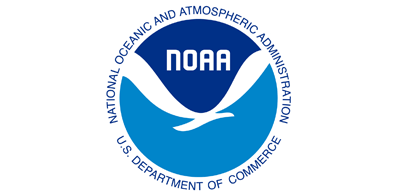
Zebra and Quagga Mussels
(Dreissena polymorpha & Dreissena bugensis)
Species at a Glance
Zebra and Quagga Mussels are fingernail-sized freshwater mollusks that attach to objects and other organisms. These two species are cousins, originating from the Caspian Sea region of southeastern Europe. Since their discovery in the Great Lakes, they have quickly spread to become one of the most intrusive, prolific, and costly aquatic invaders in North America.
Species Description
Zebra and Quagga Mussel shells generally have alternating light and dark bands but may be entirely light or dark. Zebra Mussels have a “D” shaped shell which, when placed on a surface, allows them to sit upright on their flattened underside. Quagga Mussels are rounded in shape, lacking the flattened underside, and will topple over when placed on a surface. Compared to Zebra Mussels, Quagga Mussel populations can tolerate cooler water temperatures, lower dissolved oxygen content, and are commonly found as deep as 100 feet or more; however, they are not limited to deep water habitats. Zebra Mussels are rarely found at depths greater than 50 feet.
Native & Introduced Ranges
Native to eastern Europe and western Asia in the Black, Azov, and Caspian Sea drainages, Zebra Mussels first appeared in the Great Lakes in Lake St. Clair in 1988, and Quagga Mussels were discovered in Lake Erie in 1989. Both species were likely transported to the Great Lakes in the ballast water of overseas cargo ships. In Pennsylvania, Zebra Mussels have been found in Lake Erie and in lakes and rivers in the Allegheny, Susquehanna, Potomac, and Ohio River Basins. Quagga Mussels have been found in Lake Erie, and quarries in the Susquehanna and Delaware River Basins.
Biology & Spread
The reproductive cycles of invasive mussels allow for successful and rapid infestation. Fertilization takes place externally and one female can produce up to one million eggs. Each fertilized egg develops into a free-swimming, microscopic larva called veligers, which can float in the water column for three to four weeks before settling on a hard surface where it develops a shell and begins to colonize with other mussels. Both mussels can survive out of water for up to five days, making it easy for them to be carried to new locations on recreational boating and fishing gear. Adult mussels can attach to boat hulls, trailers, motors, vegetation, and equipment using sticky fibers called byssal threads. Veligers can float undetected in the water of bait buckets, live wells, and bilges.
Habitat
While Zebra Mussels are found mainly on hard substrates such as rock, wood, concrete, and steel, Quagga Mussels can survive on both hard and soft sediment.
Impacts
Threat to Biodiversity
Efficient filter feeders, Zebra and Quagga Mussels are capable of filtering one liter of water per day, consuming the microscopic plants and animals, called plankton, found in it. The removal of plankton, in turn, reduces the amount of food available for other organisms. Research has shown this disruption in plankton availability has impacted the growth of sport fish species like Walleye. Zebra and Quagga Mussels also selectively filter for certain types of green and brown algae, while they reject toxic cyanobacteria. This results in higher concentrations of cyanobacteria in the algal community, which can cause taste and odor problems for drinking water supplies and lead to harmful algal blooms. Filtering of the water also allows sunlight to penetrate deeper into the water column, causing an overgrowth of aquatic plants. Native species of mussels and clams are also impacted as invasive mussels form colonies on their shells, hindering their ability to feed and breathe.
Economic Costs
Zebra and Quagga Mussels attach themselves in large clumps on hard surfaces such as boat hulls, docks, and buoys. They can also colonize inside water intake pipes, clogging and damaging infrastructure at waterside industries such as power and water facilities. Removing and controlling mussels is very expensive, with the economic impact of Zebra and Quagga Mussels in the United States and Canada reaching about $140 million dollars each year in damage and control costs.
Health Risks
Because they are filter feeders, Zebra and Quagga Mussels can build up contaminants such as PCBs, heavy metals, and toxins in their tissues. These chemical contaminants can then be passed up the food chain into larger fish and birds. Scientists also suspect they can concentrate harmful bacteria, including the species that causes Type E Botulism, a disease that has caused large die-offs of birds and fish in the Great Lakes.
Prevention & Control
Preventing the introduction and spread of Zebra and Quagga Mussels is the best way to protect natural habitats from harm.
- Know how to identify and report Zebra and Quagga Mussels
- According to Pennsylvania Fish and Boat Commission regulations (58 Pa. Code Chapter 71):
- Boaters must drain all water from their boat and remove drain/bilge plugs before leaving a water body.
- Always check for and remove plants, mud, and debris from boats, trailers, clothing, and equipment before entering a water body and before leaving a water body. It is unlawful in Pennsylvania to transport plants, mud, or debris on boats and trailers.
- Clean all gear and equipment with hot water (140°F or 40°C) or salt water, OR let boats and equipment dry thoroughly for at least five days before entering a new water body.
- It is illegal to possess, transport, sell, or introduce Zebra and Quagga Mussels, living or dead, in Pennsylvania.
References:
- Benson, A., and Raikow, D. 2006. Dreissena polymorpha. USGS Nonindigenous Aquatic Species Database, Gainesville, FL.
- Britton, D. 2006. Zebra Mussel (Dreissena polymorpha). ANS Task Force Website.
- Virginia Department of Game and Inland Fisheries (VDGIF). 2006. Millbrook Quarry Zebra Mussel Eradication.



